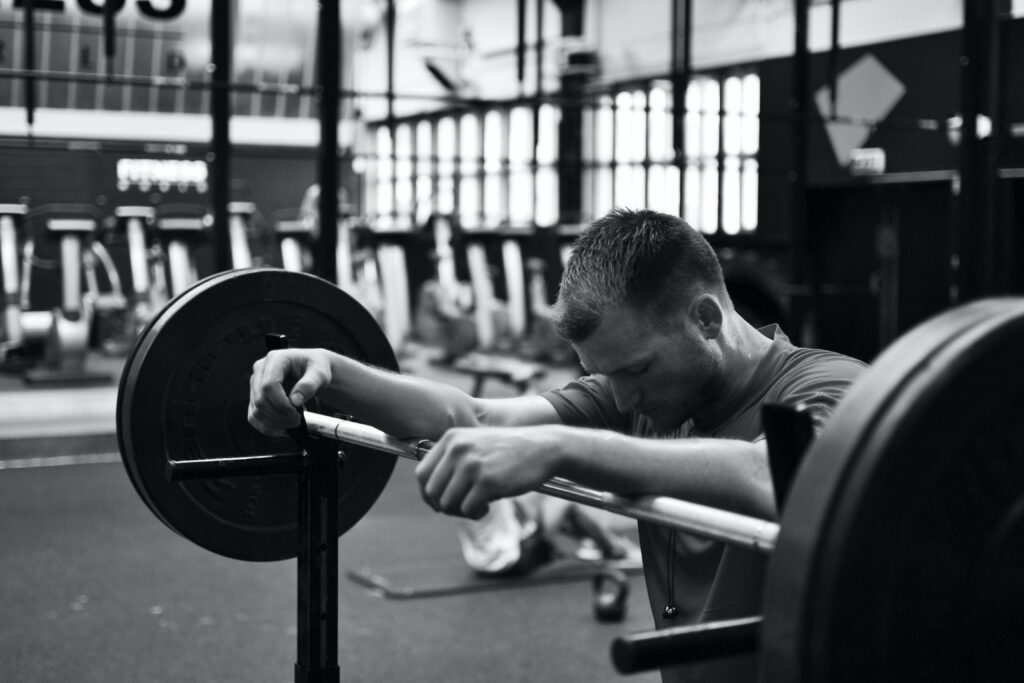
Having great endurance is good. But having a marathon-runner pencil neck? Not so much.
Being strong is awesome, but a powerlifting gut weighs you down.
Having great flexibility can be useful, but being bendy without coordination makes you a living manifestation of the QWERTY guy.
What I’m trying to say is that there are many physical qualities you should be training in order to be a healthy, high-performing human. But you have to plan your training intelligently in order to achieve this well-roundedness.
One of the biggest problems with training everything at once (i.e. concurrent training) is that you end up spinning your wheels. Throwing a million and one different stimuli in the form of interval training, lifting, aerobic training, and plyometrics at yourself ultimately leads to minimal adaptation in all the areas you’re trying to train at once.

Sounds like a major waste of time, doesn’t it?
So what do you do?
BLOCK PERIODIZATION IF YOU WANT TO BE A SAVAGE IN ALL AREAS
Block periodization allows you to become great at EVERYTHING: strength, power, endurance, speed, agility, balance… if you want it, you can fit it into your training program with block periodization.
With block periodization, the goal is to improve one aspect of performance for a few weeks while doing the bare minimum to maintain the others – taking advantage of how EASY it is to maintain certain physiological or neurological qualities once you’ve trained them to a certain level.
In short, you want to figure out what you suck at and put tons of time and attention towards shoring up the suck for a few weeks (i.e. planning out, or periodizing, your training blocks) while maintaining your other, less sucky physical qualities.

To make it even more simple, I’ve created a step by step guide so that you can figure out…
- Where your weaknesses are.
- How to train so that those weaknesses become your strengths.
- How to train effectively to maintain what you’re already good at.
Step 1: Understand the 3 broad categories of training
We’ll come back to this later, but this is the foundational knowledge you’ll need to re-organize and simplify your view on the rabbit hole mindfuck that is performance training.
| Training Category | What it Entails |
|---|---|
| Strength | – Musculoskeletal system dominant activity. – The ability to produce lots of force. – The ability to stabilize your joints through their entire range(s) of motion. |
| Endurance | – Cardiorespiratory system dominant activity. – The ability to produce force over long periods of time. – The ability to do more of everything your body needs to do to stay alive, but with less fuel. Metabolic efficiency. |
| The ABCs of Athleticism (Agility, Balance, Coordination) | – Nervous system dominant activity. – The ability to react in response to a stimulus. – The ability to manage your centre of mass in relation to gravity and other external forces. – Body awareness and motor learning. |
Step 2: Understand the specific qualities associated with each category of training, and how to train them
Go through the list and give yourself an honest assessment of what you’re good at, and what you suck at. Keep in mind that the following isn’t an exhaustive list, as I’ve tried to simplify performance training as much as possible to make it digestible FOR THE PEOPLE (you!)
| Training Category | Specific Quality | How to Train it |
|---|---|---|
| Strength | Speed (how fast can you move?) | Move low loads around as fast as possible. |
| Strength | Power (how fast can you move with an appreciable amount of force behind it?) | Move moderate to high loads around as fast as possible. |
| Strength | Mobility (how flexible are you, and how much control do you have over your flexibility?) | Gradually expose your joints’ end ranges to different types of load. |
| Strength | Plyometric strength (how springy and elastic are you?) | Work on speeding up or producing more force throughout the stretch-shortening cycle; get violently springy. |
| Strength | Maximal strength (How much force can you produce in one effort?) | Work on maximal force production. |
| Endurance | Aerobic capacity (How big is your capacity for low to moderate-intensity work?) | Move at a sustainable pace for long durations. |
| Endurance | Lactate tolerance (How good are you at holding off the “burning” sensation in your muscles during endurance activities?) | Breathe hard and try to find the “burn”, and hold that pace for short to medium durations. |
| Endurance | Strength-endurance (How good are you at applying force over multiple efforts, with breaks in between?) | Produce moderate to high forces, with small breaks in between, for medium to long durations. |
| Endurance | Power-endurance (How good are you at applying force quickly over multiple efforts, with breaks in between?) | Produce moderate to high forces quickly, with small breaks in between, for medium to long durations. |
| The ABCs | Decision-making speed (How well can you respond, and make decisions in response to specific stimuli?) | Play sports; learn new physical skills. |
| The ABCs | Visual acuity (How well can your eyes focus and track objects?) | Play sports; learn new physical skills. |
| The ABCs | Vestibular function (How good is your balance, and your ability to keep your bearings in different body positions?) | Play sports; learn new physical skills. |
| The ABCs | Proprioception (How body-aware are you?) | Play sports; learn new physical skills. |
| The ABCs | Coordination (How much control do you have over your entire body, in response to the sensory information it receives?) | Play sports; learn new physical skills. |
STEP 3: Pick a specific quality you’d like to improve, and train it 3-5x/week for a period of 3-6 weeks. With the two remaining broad training categories, train them each 1x/week.
I’ve included 2 case studies below as examples.
John is strong, fit, and athletic, but he’s a stiff bastard. He plans to use a combination of weight training with slow eccentrics, passive stretching with isometrics, and “flow” mobility drills to improve his mobility. He’ll train this way 4x/week for the next 6 weeks to turn his lagging mobility around as quickly as possible. To maintain the other aspects of his fitness, he’ll go for a long swim 1x/week to serve as his endurance training, and he’ll play a game of rec-league volleyball 1x/week to serve as his ABCs training.
Jess is an ex-college basketball player, and although she’s adequately strong and hyper-athletic, her aerobic capacity has gone down the drain ever since she graduated. She plans to use a combination of distance running, cycling, and high volume resistance training to improve her aerobic capacity. She’ll train this way 3x/week for the next 4 weeks to get her work capacity back up to par. To maintain the other aspects of her fitness, she’ll do kettlebell and barbell work 1x/week to serve as her strength training, and she’ll play a pickup game of basketball 1x/week to serve as her ABCs training.
In summary: Complete health and sustained pain-free performance is where it’s at. You want to chase after all the qualities that are prerequisite to becoming a high-performing human. It feels good to be a savage in all areas.
Intuitively, you know that strength training on its own will turn you into a stiff, compressed oaf. You know that endurance training on its own will turn you into a weak bastard – albeit a weak bastard with a huge engine. You know that athleticism on its own won’t save you from injury or chronic disease.
You want all the traits that drive elite performance. Strength, stability, aerobic capacity, power, coordination, balance, lactate tolerance, hypertrophy, agility, speed endurance, flexibility… the list goes on and on, to the point where you might begin to feel confused and apathetic. Hopeless that you’ll be able to capture all of those qualities in one training program.

Luckily, you now know how to leverage block periodization so that you CAN have your well-rounded human performance cake, and eat it too.
Hopefully this article also served as a peek inside my thought processes as a strength and conditioning coach. I’ve tried to simplify performance training concepts as much as possible, but in the event that you have any lingering questions, or if you need more individualized support in achieving your goals, please don’t hesitate in reaching out. I’m always looking to help out athletes and exercise enthusiasts on their path to better health and performance – you just have to ask!
Pat Koo
BKin, CSCS

